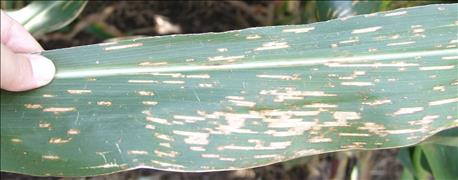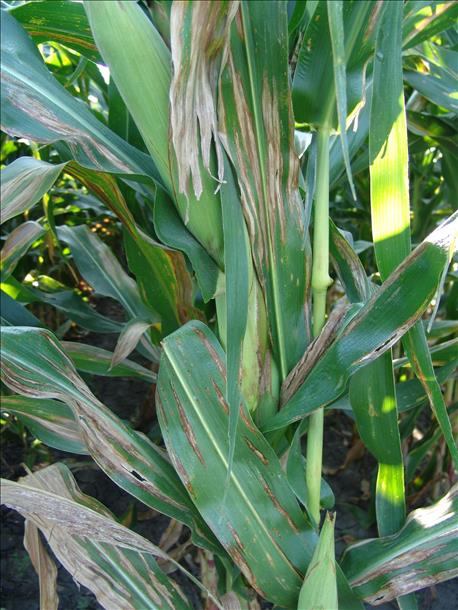
Get it applied on time. That's important advice for fungicide use in corn and other crops, according to University of Nebraska Extension plant pathologist, Tamra Jackson-Ziems. "Most foliar fungicides provide a relatively narrow window of protection with respect to crop and disease development during the season," Jackson-Ziems says. "Most pathologists agree on about 21-28 days. Protection provided by products applied too early might be worn off by the time disease severity peaks," she explains. "On the other hand, applications delayed until severe disease develops may not provide the benefits that we often expect."

GRAY LEAF SPOT: An example of severe Gray Leaf Spot in corn. (Courtesy photo from UNL).
To limit input costs and control disease with a single pass, producers need to monitor fields that they know are at risk for diseases, along with weather conditions and disease development in sensitive hybrids, Jackson-Ziems says. This is the best way to make timely and the most effective applications.
On the corn side, if wet conditions persist early into this growing season, Jackson-Ziems is concerned about the potential development of seedling diseases in early planted corn where there is a lot of moisture. If wet and cool conditions continue on into the growing season like they did in many parts of the state in 2014 and 2015, she would be watching for Northern Corn Leaf Blight in susceptible hybrids in the eastern half of the state. "It's important to understand the characteristics, especially the weaknesses, of hybrids and use the disease history to predict which diseases could be problematic," she says. "In addition, moisture and high humidity can also lead to more Gray Leaf Spot in mid-season, like we saw in 2015."

NORTHERN CORN LEAF BLIGHT: An example of severe Northern Corn Leaf Blight. (Courtesy photo from UNL).
Jackson-Ziems says that we often see fewer leaf diseases during hot or dry weather, reducing the need for fungicides to manage them. "However, our data have shown secondary benefits from foliar fungicide applications made at or near tassel emergence in the absence of substantial foliar disease pressure," she says. Improved standability and reduced lodging at harvest have been observed during some growing seasons in some hybrids.
Jackson-Ziems says that several new fungicide products are available this season. Some of these include products with new combinations of fungicide active ingredients with varying modes of actions, providing more options for producers who are concerned about preventing resistance issues and want to rotate products to prevent development of resistant fungal pathogens. You can learn more about how varied products performed in UNL trials, as well as disease development issues during the growing season at cropwatch.unl.edu.
About the Author(s)
You May Also Like






